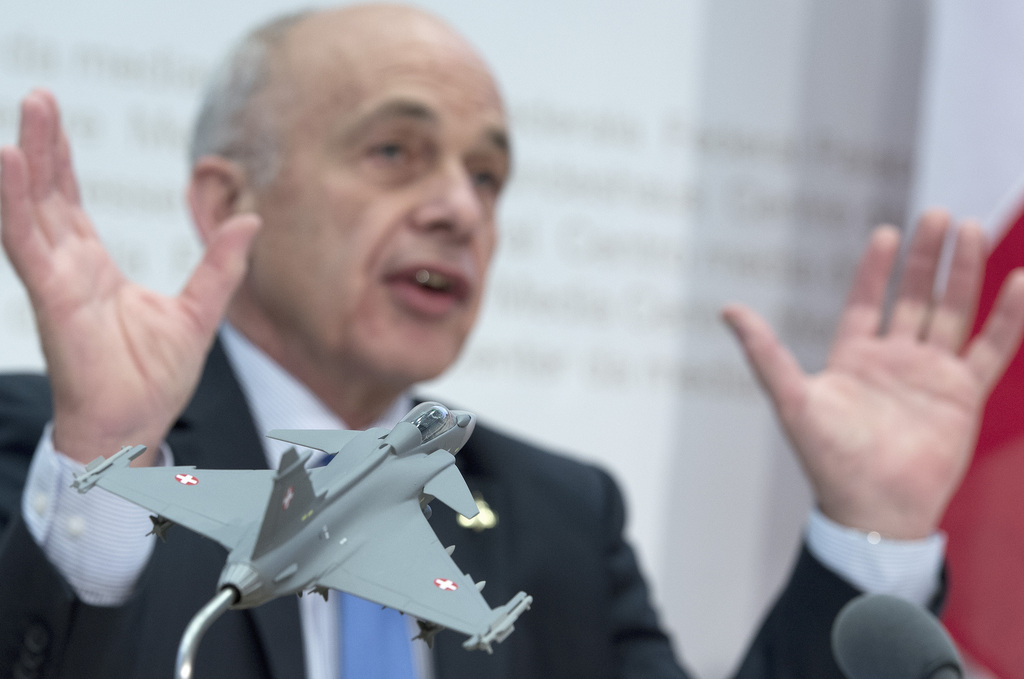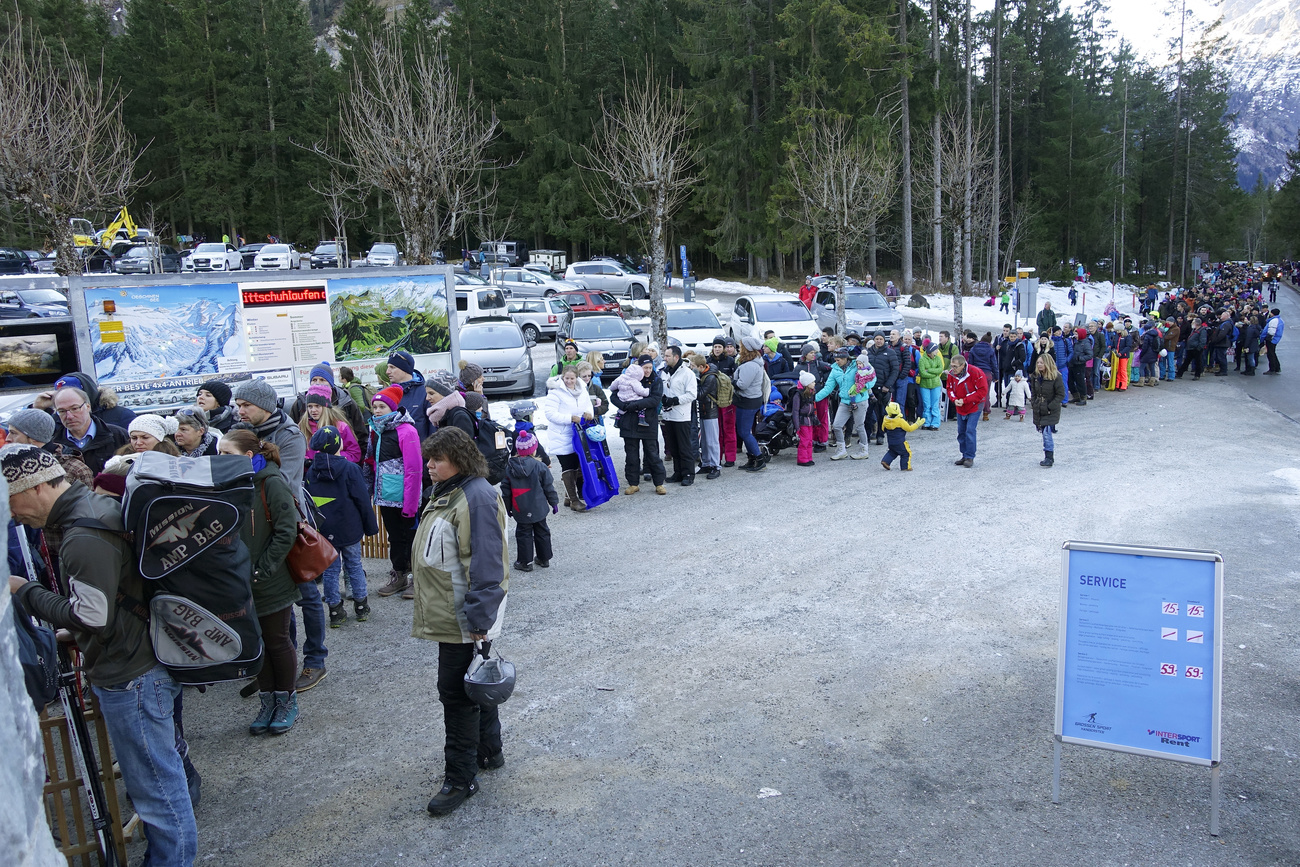Fighting over military jets in changing times

The public campaign for or against the purchase of Swedish fighter jets has been marked by series of verbal dogfights and media revelations. But it has been low key in comparison to the campaign to buy F/A-18s 20 years ago.
Those expecting to see campaign history repeating itself these days have been waiting in vain and will most likely remain disappointed. There are no signs of colourful mass rallies ahead of the May 18 vote.
The current campaign may appear unspectacular – even if it’s been shrill at times – compared with the shows of force by supporters and opponents of the acquisition of F/A-18 aircraft in May 1993. At that time they each moblilised at least 20,000 people in front of parliament in the capital, Bern.
Nevertheless, Mark Balsiger, political scientist and political advisor, argues the most recent debate whether to purchase 22 Swedish aircraft for CHF3.1 billion ($3.5 billion) has been an intense, long drawn out affair.
“It really began five years ago and saw many twists and turns in parliament and cabinet. At one point the defence minister was against the purchase of new jets and then he changed his mind. Also the Senate initially tried to block the acquisition,” he says.
Also at that time pacifist and centre-left groups had collected enough signatures for a nationwide vote on a constitutional amendment calling for a moratorium on military jets, but decided to withdraw it – only to launch a referendum four years later.

More
Leak reveals Swedish interest in Gripen vote
Swedish ambassador
Two incidents over the past two months stand out for Balsiger.
For one the revelations that the Swedish ambassador to Switzerland, Per Thöresson, has been a very keen – and successful – lobbyist for the Swedish aerospace company Saab, which produces the Gripen.
Secret documents leaked over the past three months have also revealed rather unflattering comments by the ambassador about some Swiss parliamentarians and Defence Minister Ueli Maurer.
Similarly important, if not potentially more damaging for the supporters of the Gripen purchase were maverick comments by a parliamentarian from the defence minister’s rightwing Swiss People’s Party suggesting the government could consider buying Swedish jets even if Swiss voters refused to give the green light on May 18.
Not quite on the same level is a controversy over a dressing down by the defence minister of a television journalist. Maurer, known for his outspokenness, accused Swiss public television, SRF, of leftwing political bias.
Balsiger acknowledges that the incident caused a public stir but doubts whether it will have a decisive impact on the campaign.
“It shows that Maurer has political instinct. He knows how to create and grab maximum media attention,” says Balsiger.
Parliament approved the CHF3.1 billion deal with Sweden last year, but an alliance of leftwing and centrist groups collected enough signatures to challenge the decision to a nationwide referendum.
The Gripen fighter JAS-39 by Swedish aerospace company Saab was chosen by the cabinet over competition by the French Rafale by Dassault and the Eurofighter by a European consortium headquartered in Germany.
The acquisition of fighter jets for the Swiss Army have often been highly controversial. (See: How the Swiss Air Force struggled to grow wings). They led to the resignation of defence ministers in the 1960s and also saw a nationwide vote on the purchase of F/A-18 in 1993.
A final opinion poll on the May 18 vote is expected this week. A first survey commissioned by the Swiss Broadcasting Corporation gave opponents a 10% lead and 6% of respondents said they were undecided.
No comparison
From the very beginning of their campaign back in March Evi Allemann, leading centre-left Social Democratic parliamentarian, has dismissed any ambitions of trying to aim for mass mobilisation.
Knowing that the time is not right for a broad debate on the virtues of the Swiss army and its Air Force, she puts financial issues to the fore.
“The army does not stir up the same emotions as it did 25 years ago. It is no longer about slaughtering a ‘Sacred Cow’,” she says.
Her perception is shared by political scientists and observers alike.
“The fight over the F/A-18 jet came only years after the end of the Cold War era and followed a nationwide vote in 1989 when the pacifists landed a surprise by winning more than a third of the vote for their proposal to abolish the Swiss army,” says Longchamp.
Despite the strengths of the opposition campaign , Balsiger is convinced Gripen supporters will score a victory on May 18.
“The buzz of the 1990s is definitely gone. The current political situation in Ukraine does not help and causes uncertainty.”

In compliance with the JTI standards
More: SWI swissinfo.ch certified by the Journalism Trust Initiative















You can find an overview of ongoing debates with our journalists here . Please join us!
If you want to start a conversation about a topic raised in this article or want to report factual errors, email us at english@swissinfo.ch.